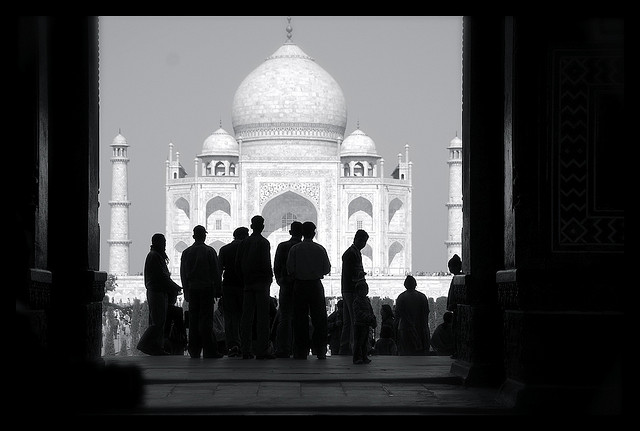
Australia is offering India a renewed geostrategic embrace and an economic deal—notable efforts by Canberra to strengthen geostrategic convergence with India and to deepen geo-economic linkages.
The bilateral effort with India feeds the regionalist understanding expressed in the 'Indo–Pacific.' The Indo-Pacific is both in view and under construction.
The two elements at the forefront of Canberra thinking about India for 2015 are:
- The endorsement of the Indo–Pacific as the reigning geographic construct in the Abbott government’s Defence White Paper.
- Negotiation for an Australia–India free trade deal—a Comprehensive Economic Cooperation Agreement. Australia’s aspiration is to clinch the deal by the end of 2015.
Coming over the horizon first is the White Paper. By embracing the Indo–Pacific in the policy statement, the Abbott government will be cementing a bipartisan position with Labor, which made the Indo–Pacific central to its 2013 Defence White Paper.
On taking office, Abbott quickly sunk the other idea embraced by Labor under Julia Gillard—the Asian Century. So, Labor’s Asian Century White Paper gets the flick while a key thought in Labor’s Defence White Paper lives to serve another government.
Seen through the Canberra bureaucratic prism, this is a conceptual win for Defence over Treasury. It was Treasury, under Rudd and Gillard, that really started using the phrase Asian Century—putting it in the Treasurer’s mouth in the
budget speech—and using it to predict internal changes for the Australian economy. And it wasn’t a Foreign Affairs heavy but the former head of Treasury, Ken Henry, who ran the Asian Century inquiry for Gillard.
Policy fashions matter greatly in Canberra. And Defence was unhappy during the brief fashion ascendancy of the Asian Century as concept-of-the-moment. In fact, Defence wouldn’t use the Asian Century nomenclature—continuing to talk about the Asia–Pacific. Why so unfashionable? What the Asian Century conceivably left out—the US—gave Defence a combination of cold sweats and conniptions.
Australia, Japan and plenty of others built the Asia–Pacific model because it gives an explicit role to the United States. It aligns Australia’s strategic and economic interests. To shift from the Asia–Pacific Century to the Asian Century is to reframe the power equation and the hierarchy. All this matters for politics and government, for bureaucracy and the chattering classes.
In the zero sum way they do this at Russell HQ, Defence saw the Asian Century as counting down the US alliance. Zut alors!
As the French would advise, if you suddenly become unfashionable with the old look, go get another fashion. If the Asia–Pacific was so last century, then the Indo-Pacific can look like the 21st century future.
Defence loved the Indo–Pacific as its very own counter-fashion. Now Defence has sold it to both Labor and Coalition governments. Bipartisan agreement and bureaucratic victory make for a sweet combination. The Indo–Pacific will be one continuity—a still-prevailing fashion—shared by Labor's 2013 White Paper and the Coalition's 2015 rethink.
More than bureaucratic manoeuvre and bipartisan compromise, the Indo–Pacific might even be a good idea. It widens the understanding of the emerging power structure and is a particular acknowledgement of India’s future role. The history of the Asia–Pacific as a concept meant it could be seen as overlooking or even excluding India. The Indo–Pacific is an explicit endorsement of India's place in an enlarged system.
The problem for Defence is to relate its big, new, geopolitical concept to force structure and strategy—the meat and drink of a White Paper. Defence has to cut a strategic suit that bears some faint relationship to its new fashion. Expect a slight tweak to the lapels.
 Print This Post
Print This Post